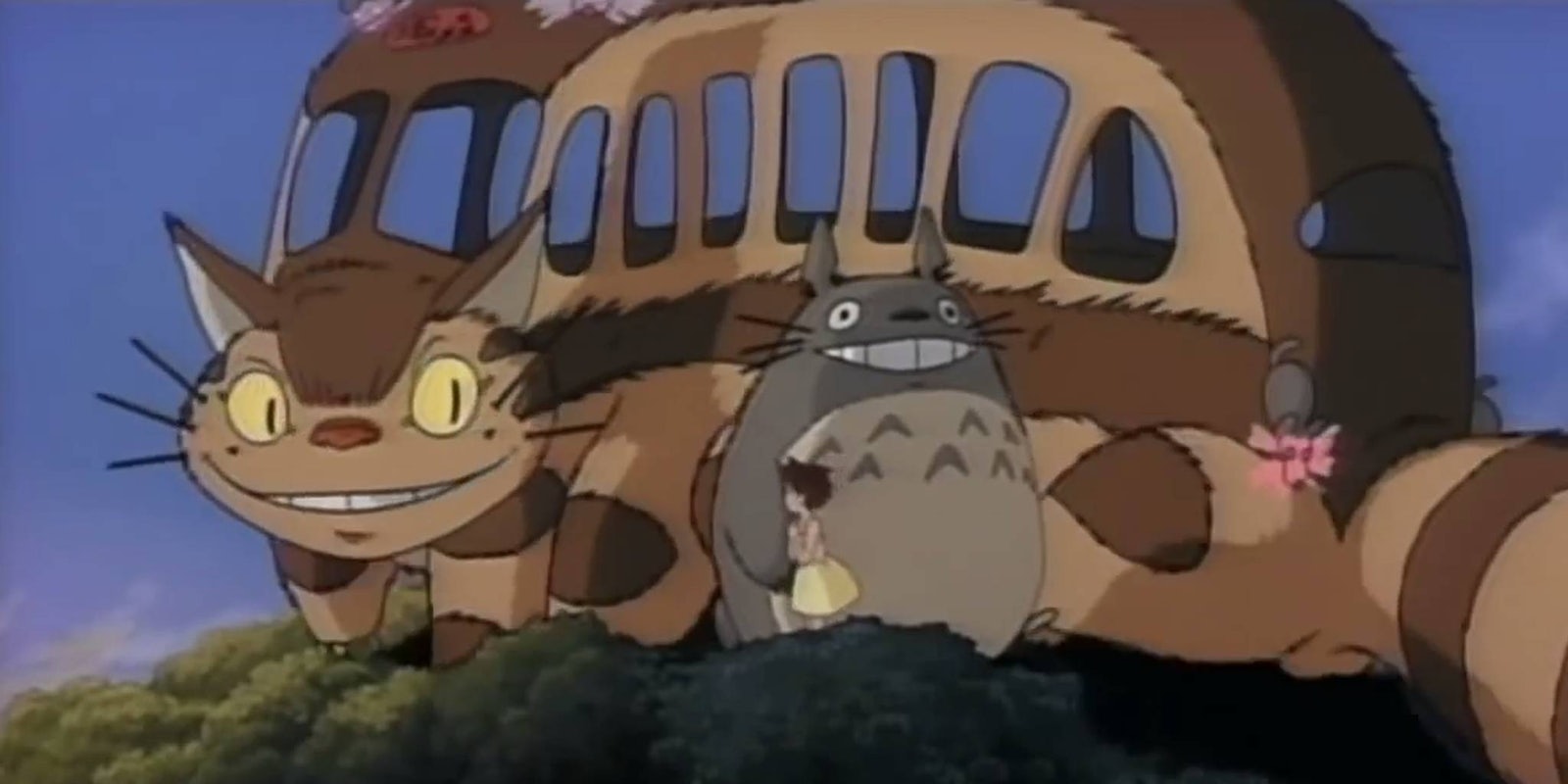- Studio Ghibli has been wowing the world with its incredibly beautiful animated films for more than 30 years.
- Now, you can stream a nearly-complete Studio Ghibli collection you via HBO Max.
- While it’s hard to pick the best of the Studio Ghibli movies, we’ve highlighted six of them. If you’re curious about what it offers, it’s a great introduction.
Founded by directors Hayao Miyazaki and Isao Takahata in Tokyo, the relatively small Studio Ghibli operation has created more than 20 films. While this article points you to Studio Ghibli’s very best work, you should know that’s kind of a misnomer. It has such an incredible commitment to excellence, from its stories to its characters to its hand-drawn animation, that everything it has produced is worth watching.
So if you’re already familiar with the films listed here in no particular order, go ahead and keep exploring the rest of Studio Ghibli’s catalog. If you’re relatively new to Studio Ghibli’s work, these movies are an excellent place to start.
1) My Neighbor Totoro
If you’re used to watching booming modern blockbusters, the first thing you might notice about Totoro is how quiet it is. We meet Satsuki, Mei, and their father, Tatsuo Kusakabe, as they move to a home in the country, surrounded by trees and farmland. They clean out the cobwebs—and more than a few adorable dust sprites—in the hopes their mother, Yasuko, will soon be able to join them from the hospital. The premise is simple, but where Studio Ghibli shines is in the details of everyday life and in the magic of nature. This is the movie that introduces us to the enduringly lovable Totoro, a huge, furry, and gentle tree spirit who lives in a massive camphor tree near the Kusakabe’s home, and his buddy, the ever-popular Catbus. As fantastical as these creatures are, the movie stays grounded in Satsuki and Mei, who are as realistic and relatable as children come in any medium.
2) Howl’s Moving Castle
While still a kid’s movie, Howl’s Moving Castle pivots away from following a child protagonist, instead introducing us to a young woman, Sophie, who is magically transformed into an elderly spinster. She finds a home aboard a traveling mechanical castle, surrounded by a zany cast of magical characters, including a young apprentice, a fire demon, and a scarecrow affectionately called “turnip head.” While Howl is the title character, the sulking wizard often fades into the background as Sophie’s generosity of spirit shines. Far from being a damsel, she is practical and independent, and her motivations are grounded in love and understanding. Her sturdiness is contrasted against the moody Howl and the war—a common theme in Ghibli’s work—that threatens to destroy them. It’s a mature, layered story that kids will find more and more meaningful as they grow.
3) Spirited Away
Often hailed as Studio Ghibli’s best work and probably its most recognizable title, Spirited Away follows the story of 10-year-old Chihiro. She’s moving to a new home with her parents, who get lost and venture off the beaten path into the spirit world. When Chihiro’s parents are transformed into pigs, her new friend Haku helps her get work at a spirit bathhouse until they figure out what to do. Like Ghibli’s other protagonists Chihiro has plenty of opportunities to lash out about her situation. Instead, she tends toward kindness, and it paves her path forward as she learns how to help her friend Haku and save her parents. The bathhouse is a richly drawn world, one that earned Studio Ghibli an Academy Award for best animated film in 2001. It’s also worth noting that Spirited Away remains Japan’s highest grossing film, topping Titanic, Frozen, and Harry Potter.
4) The Wind Rises
If the average director pitched a meditative biopic about Jiro Horikoshi, the inventor of the Mitsubishi A5M Zero fighter, they’d be laughed out of a studio head’s office. But Hayao Miyazaki is far from your average director. He’s a living legend, and The Wind Rises is his love letter to film, to animation, and to the flying machines that have fascinated him since he was a boy. While the Zero was a technological triumph for Japan, it was also a war machine responsible for killing thousands during World War II and a painful reminder of that devastating chapter in the country’s history. Miyazaki wades through the hurt and controversy to find the complicated human story behind the machine.
5) Princess Mononoke
Studio Ghibli views certain types of technology with affection: For example, the protective guardian robots in Castle in the Sky. But, by and large, the studio tends to view nature with deep respect, often showing it at odds with the corrupting influence of human sprawl. The studio’s Pom Poko touched on the theme in 1994 as a society of tanuki (raccoon dogs) plotted to maintain their homes in the face of habitat destruction. Then in 1997, Princess Mononoke took a much darker and bloodier look. Ashitaka, a young warrior, gets embroiled in the battle between the forest gods and the men of Irontown. Here again, Ghibli refuses to talk down to its audience, delivering that sobering story about the power of nature.
6) Kiki’s Delivery Service
Kiki is another of Studio Ghibli’s incredible female protagonists. The 13-year-old witch is still feeling her way through the world, but unlike similarly aged characters in western media, there’s no hint of brattiness here. Kiki is earnest as she tries to start her own small delivery business with her talking cat pal, Jiji, and discovers not only her independence but also her limitations. She pushes herself too hard and loses her powers, but crisis and friendship snap them back into place. This is one coming of age story you’ll appreciate far beyond your teen years.
The Daily Dot may receive a payment in connection with purchases of products or services featured in this article. Read our Ethics Policy to learn more.


